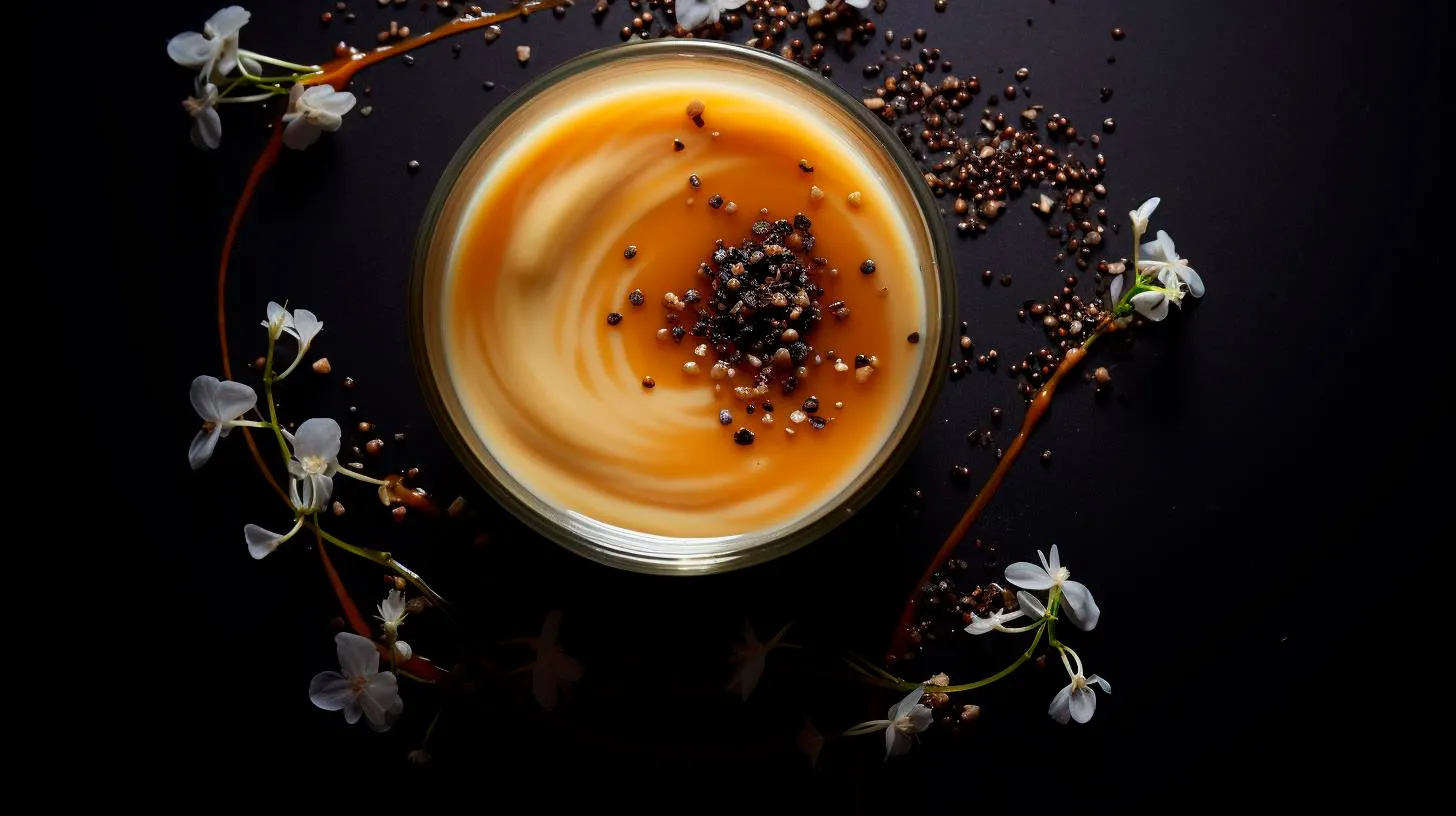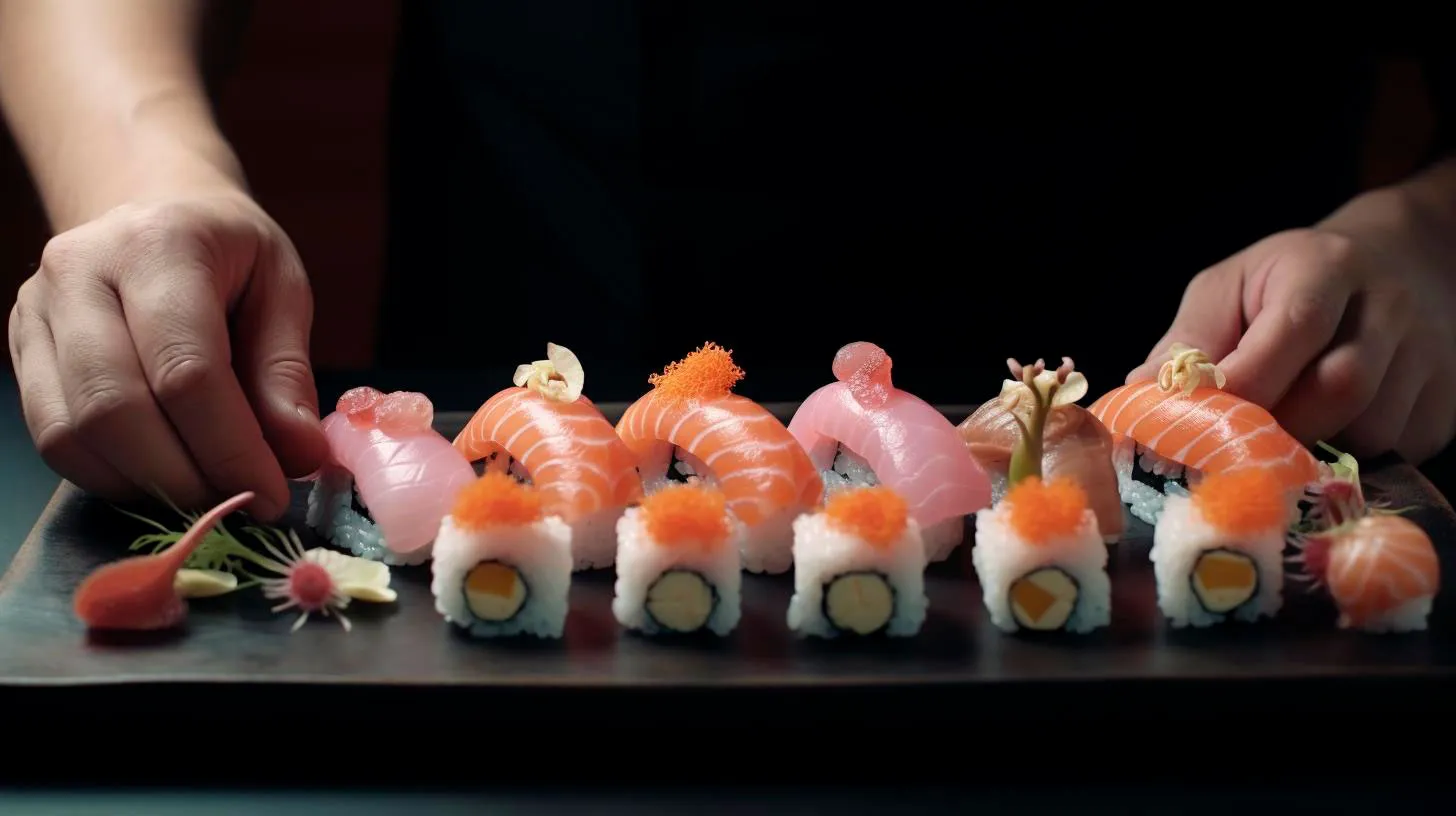Efficiency meets precision: Sushi knife secrets for chopping veggies
In this article, we will uncover the little-known secrets of sushi knife selection, focusing particularly on how these knives can be harnessed to efficiently and precisely chop vegetables for your sushi creations.
Understanding the Anatomy of a Sushi Knife
Before we dive into the specifics of vegetable preparation, let’s familiarize ourselves with the anatomy of a sushi knife. Known as the yanagiba, this traditional Japanese knife has a long, single-edged blade designed for slicing raw fish and creating clean cuts. Its blade is typically made of high-carbon steel, ensuring exceptional sharpness and edge retention.
- Single-edged blade: Unlike Western-style knives, sushi knives have a single-edged blade, allowing for more precise and thin cuts. This design also reduces the possibility of food sticking to the knife, making it easier to create clean and beautiful cuts.
- High-carbon steel: The high-carbon steel used in sushi knives not only ensures razor-sharpness but also provides enhanced durability and edge retention. This means your knife will remain sharper for longer, reducing the need for frequent sharpening.
- Long and slender blade: The elongated blade of a sushi knife allows for long, sweeping cuts, ideal for slicing through vegetables without applying excessive force. This ensures a cleaner and more precise cut, preserving the integrity and freshness of your ingredients.
The Art of Vegetable Preparation
While sushi is traditionally associated with raw fish, vegetables play a crucial role in enhancing the overall flavor, texture, and visual appeal of sushi rolls. Here are some secrets for efficiently chopping vegetables using a sushi knife:
1. Choose the right knife for the job:
When it comes to vegetable prep, the deba knife is the sushi chef’s secret weapon. With a thick, sturdy blade, the deba knife excels at slicing through root vegetables, leafy greens, and even delicate herbs. Its robustness and weight allow for efficient chopping without exerting unnecessary force.
2. Master the art of julienne cuts:
Thinly sliced or julienned vegetables add texture and visual appeal to your sushi rolls. Using a sushi knife, carefully slice vegetables into matchstick-sized pieces to achieve the perfect julienne cut. This technique requires precision and patience, ensuring consistent results across all your vegetable ingredients.
3. Precision slicing for seaweed wraps:
When you’re creating sushi rolls that involve seaweed wraps, precision slicing is crucial. A sushi knife’s sharp edge effortlessly cuts through nori sheets, ensuring clean and precise edges for your rolls. Achieving this level of precision with a regular knife can be challenging, making the sushi knife an indispensable tool.
The Advantages of Using a Sushi Knife for Vegetable Chopping
Now that we have explored the key techniques for vegetable preparation with a sushi knife, let’s discuss the advantages this specialized tool offers:
- Efficiency: The combination of a single-edged blade and a long, slender design allows for efficient chopping, reducing the effort and time required to prepare vegetables for your sushi rolls.
- Precision: Sushi knives are renowned for their precision. With their sharp edge and ergonomic design, they enable you to create clean and precise cuts, enhancing the aesthetics of your sushi rolls.
- Minimal food waste: The clean cuts achieved by a sushi knife result in less damage to vegetables, reducing waste and preserving the quality of your ingredients.
- Durability and edge retention: Sushi knives are built to last. The high-carbon steel used in their construction ensures exceptional durability and edge retention, saving you from the hassle of frequent sharpening.
Now that you have unlocked the secrets of using a sushi knife efficiently and precisely for chopping vegetables, you can elevate your sushi making skills to new heights. Incorporate these techniques and enjoy the perfect crunch, flavor, and presentation in every bite of your homemade sushi rolls.
Mastering the Art of Cutting
In this article, we will dive into the various cutting techniques, their advantages, and key takeaways to help you become a cutting expert in the kitchen!
The Importance of Proper Cutting Techniques
Before exploring the different cutting techniques, let’s understand why using the right cutting techniques is crucial:
- Enhances Texture and Presentation: Proper cutting techniques can transform a dish from ordinary to extraordinary. Precise and uniform cuts ensure that ingredients cook evenly and look visually appealing.
- Improves Cooking Time: By using appropriate cutting techniques, you can optimize the cooking time. Uniformly cut ingredients will cook at the same pace, ensuring the dish is perfectly cooked.
- Accentuates Flavors: The way ingredients are cut affects how they release their flavors. Smaller cuts may intensify flavors, while larger cuts may offer distinct texture and taste.
Popular Cutting Techniques
Now let’s explore some essential cutting techniques that every aspiring chef should master:
1. Julienne
Julienne is a classic cutting technique used to create long, thin, and even matchstick-like strips of ingredients. This technique is ideal for creating elegant presentations and uniform cooking. Key takeaways:
- Create uniform cuts by slicing ingredients into thin, even strips.
- Perfect for stir-fries, salads, and garnishes.
2. Mince
Mincing refers to finely chopping ingredients into tiny, uniform pieces. It allows for better flavor distribution and ensures that the ingredients blend harmoniously in a dish. Key takeaways:
- Use a sharp knife to finely chop ingredients into small, consistent pieces.
- Great for creating spice mixes, sauces, or adding flavor to dishes.
3. Dice
Dice is a cut where ingredients are cubed into equal-sized pieces. It is a versatile cutting technique used in various recipes and offers even cooking throughout. Key takeaways:
- Cut ingredients into uniform cubes of the desired size.
- Ideal for soups, stews, or when you want consistent cooking.
4. Brunoise
Brunoise is an intricate cutting technique where ingredients are finely diced into tiny cubes. This method ensures that ingredients incorporate seamlessly, providing a well-rounded flavor and texture profile. Key takeaways:
- Cut ingredients into tiny, uniform cubes.
- Perfect for adding texture and flavor to sauces, dressings, and garnishes.
Mastering The Art of Cutting: Tips and Tricks
Whether you’re a novice or experienced chef, here are some tips to help you master the art of cutting:
- Invest in Quality Knives: A sharp, high-quality knife is essential for efficient and precise cutting. It reduces the risk of accidents and ensures clean cuts.
- Practice Knife Skills: Regularly practice basic knife skills like holding the knife correctly, using proper cutting motions, and keeping a steady hand. Continued practice will improve your cutting speed and accuracy.
- Maintain a Firm Grip: Hold the knife with a firm grip and guide it through the ingredients using your knuckles as a guide. This technique provides control and consistency.
- Keep Your Knife Sharp: Regularly sharpen your knife to maintain its cutting efficiency. A dull knife can lead to uneven cuts and accidents.
- Organize Your Workspace: Keep a clean, organized cutting area to avoid accidents and maintain a smooth workflow.
- Take Your Time: Rushing through cutting can lead to uneven results. Take your time to ensure precision and consistency in each cut.
In conclusion, mastering the art of cutting is an essential skill for any chef. The right cutting techniques not only enhance the visual appeal of your dishes but also improve the overall cooking experience. By practicing different cutting techniques, investing in quality knives, and following proper knife skills, you’ll soon become a cutting expert in the kitchen!
Optimizing Techniques for Quick Vegetable Preparation
The Need for Quick Vegetable Preparation
We live in a fast-paced world where time is a precious commodity. As a result, many of us find it challenging to dedicate a considerable amount of time to cooking. However, with some smart techniques, you can save valuable minutes in the kitchen, especially when it comes to preparing vegetables. Here are some reasons why quick vegetable preparation is highly desirable:
- Time-saving: Cutting down the time spent on vegetable preparation allows you to focus on other aspects of cooking or even have more time for yourself.
- Preservation of nutrients: The longer vegetables are exposed to heat, light, and air, the more nutrients they lose. Quick preparation techniques help retain essential vitamins and minerals.
- Convenience: A prepared vegetable in the fridge means turning it into a tasty meal is just a few steps away.
Key Techniques for Quick Vegetable Preparation
Now that we understand the importance of quick vegetable preparation, let’s explore some incredible techniques that will not only save you time but also assist in achieving delicious results:
1. Batch Prepping
One of the best ways to optimize your vegetable preparation process is by batch prepping. Spend some time during the week to wash, peel, and cut various vegetables in advance. Store them in airtight containers or zip-lock bags in the refrigerator. This way, when it’s time to cook, all you have to do is grab the prepped veggies, saving you precious minutes.
2. Knife Skills
Mastering basic knife skills can significantly speed up your vegetable preparation. Practice techniques like the mince, dice, chiffonade, and julienne, which allow you to quickly and efficiently cut vegetables into desired shapes and sizes. This not only saves time but also enhances presentation and even cooking.
3. Blanched and Frozen Vegetables
Blanching vegetables, such as broccoli, carrots, or green beans, for a short period before freezing can help them retain their color, texture, and nutrients. Flash freezing the blanched veggies in small portions will allow you to have pre-prepared vegetables that cook in a matter of minutes when you need them for a recipe.
4. One-Pot Meals
Opt for one-pot meals whenever possible. These dishes, like stir-fries or pasta recipes, often include vegetables that can be quickly chopped up and added to the pot. By utilizing this technique, you minimize the time spent on chopping and preparing various vegetables separately.
Advantages of Quick Vegetable Preparation
Implementing these techniques for quick vegetable preparation offers several advantages:
- Improved efficiency: By optimizing your vegetable preparation, you become more efficient in the kitchen, saving valuable time.
- Increased creativity: With the prep work completed in advance, you have the freedom to explore new recipes and experiment with different flavor combinations.
- Healthier choices: With pre-prepared vegetables readily available, you are more likely to choose them over less nutritious options when you’re short on time.
Key Takeaways
Quick vegetable preparation is an essential skill for any home cook looking to save time and create delicious meals. By adopting techniques such as batch prepping, mastering knife skills, blanching and freezing, and embracing one-pot meals, you can optimize your vegetable preparation process and enjoy the benefits of efficiency and healthier choices. So, why wait? Start implementing these techniques today and elevate your cooking game!
Elevating your Vegetable Chopping Skills with Sushi Knife Methods
The Art of Sushi Knife
Sushi knives, also known as “sashimi knives” or “yanagiba,” are traditional Japanese knives primarily used for slicing raw fish in the preparation of sushi. These knives are known for their razor-sharp blades and precision cutting abilities. However, their usefulness extends beyond sushi-making, as they can also enhance your vegetable chopping skills.
Advantages of using Sushi Knife Methods
- Sharper and Thinner Blade: Sushi knives have extremely sharp and thin blades, allowing for effortless chopping and precision cutting. This makes them ideal for chopping delicate vegetables like tomatoes or slicing thin strips of bell peppers.
- Single-Beveled Blade: Unlike most Western knives, sushi knives have a single-beveled blade, which means they are sharpened on only one side. This unique design allows for cleaner cuts, reducing the chances of the vegetable tearing or bruising.
- Control and Stability: Sushi knives are designed to provide excellent control and stability while cutting. The ergonomic handle and lightweight blade enable you to maneuver through vegetables with ease, enhancing both your speed and accuracy.
- Efficiency and Time-Saving: With a sushi knife, you can achieve efficient and precise cuts, saving you time and effort in the kitchen. The sharpness of the blade allows you to glide through vegetables effortlessly, ensuring a smooth and even chopping experience.
Key Takeaways
Incorporating sushi knife techniques into your vegetable chopping routine can revolutionize your culinary experience. Here are some key takeaways:
- Invest in a quality sushi knife: To reap the benefits of sushi knife methods, it is crucial to invest in a high-quality sushi knife. Look for a knife with a sharp, single-beveled blade and a comfortable handle.
- Practice precision cutting: Take time to practice precision cutting techniques with your sushi knife. With regular practice, you’ll become more adept at slicing vegetables evenly and efficiently.
- Explore different cutting styles: Sushi knives offer versatility when it comes to cutting styles. Experiment with different cutting techniques, such as julienne or chiffonade, to add visual appeal to your dishes.
- Maintain and sharpen your knife: To ensure optimal performance, it’s crucial to maintain and sharpen your sushi knife regularly. Proper care will prolong its lifespan and keep it in excellent condition for years to come.
Now that you’re armed with the knowledge of how sushi knife methods can elevate your vegetable chopping skills, it’s time to put it into practice. Embrace the precision, efficiency, and overall joy of using a sushi knife, and unlock new culinary possibilities in your kitchen. Happy chopping!



